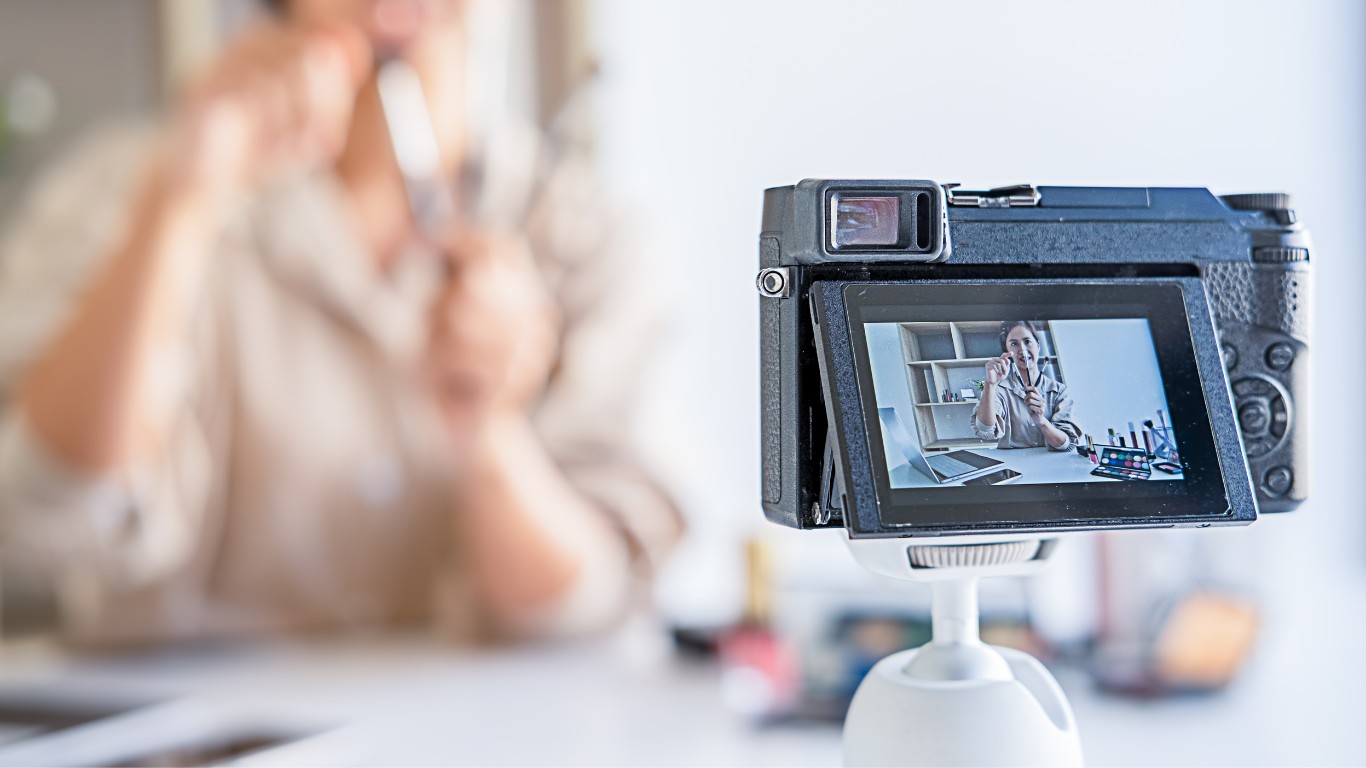Are you ready to take your GIF-making skills to the next level? Whether you’re a content creator, a social media enthusiast, or just someone who loves sharing animated moments, mastering color correction can transform your GIFs from ordinary to extraordinary. In this comprehensive GIF tutorial on color correcting, we’ll walk you through everything you need to know—step-by-step—to achieve vibrant, consistent, and professional-looking results. By the end of this guide, you’ll have the tools and knowledge to create eye-catching GIFs that stand out online.
GIFs (Graphics Interchange Format) are everywhere—social media, blogs, messaging apps—and their popularity continues to soar. But what separates a good GIF from a great one? Often, it’s the color. Color correction ensures your GIFs look polished, cohesive, and visually appealing, no matter the source material. This tutorial is designed for beginners and seasoned creators alike, offering practical tips, techniques, and insider secrets to perfect your GIFs. Let’s dive in!
What Is Color Correction in GIFs?
Before we get into the nitty-gritty of this GIF tutorial on color correcting, let’s define what color correction actually means. In simple terms, color correction is the process of adjusting the colors in an image or video to achieve a desired look. For GIFs, which are short, looping animations, color correction ensures that each frame looks consistent and visually balanced.
Why does this matter? Imagine you’re creating a GIF from a movie scene with varying lighting conditions—some frames might be too dark, others overly bright or washed out. Without color correction, your GIF could look disjointed or unprofessional. By tweaking elements like brightness, contrast, saturation, and hue, you can unify the frames and enhance the overall aesthetic.
In this guide, we’ll explore why color correction is essential for GIFs, the tools you’ll need, and a detailed step-by-step process to get it right. Whether you’re aiming for a natural look or a bold, stylized vibe, this GIF tutorial on color correcting has you covered.
Why Color Correction Matters for GIFs
GIFs are short, so every frame counts. Poorly corrected colors can distract viewers or fail to convey the mood you’re aiming for. Here’s why color correction is a game-changer:
- Consistency Across Frames: GIFs often pull from different scenes or clips with varying lighting. Color correction ensures a seamless loop.
- Enhanced Visual Appeal: Vibrant, well-balanced colors grab attention and keep viewers engaged.
- Brand Alignment: If you’re creating GIFs for a brand, consistent colors reinforce identity and professionalism.
- Emotional Impact: Colors influence mood—warm tones feel inviting, cool tones feel calm. Correction lets you set the tone.
- File Optimization: Proper color adjustments can reduce file size without sacrificing quality, making your GIFs load faster online.
In short, color correction isn’t just a technical step—it’s an artistic choice that elevates your GIFs. Ready to learn how? Let’s move on to the tools you’ll need for this GIF tutorial on color correcting.
Tools You’ll Need for Color Correcting GIFs
You don’t need to be a professional editor to color correct GIFs, but having the right tools makes all the difference. Here’s a rundown of the best software options—both free and paid—for this GIF tutorial on color correcting:
1. Adobe Photoshop
- Why It’s Great: Photoshop is the gold standard for image editing, with robust tools for frame-by-frame GIF adjustments.
- Key Features: Layers, Curves, Selective Color, Hue/Saturation.
- Cost: Subscription-based (starts at $20.99/month).
- Best For: Advanced users who want precise control.
2. GIMP
- Why It’s Great: A free, open-source alternative to Photoshop with similar capabilities.
- Key Features: Color Balance, Levels, Frame Editing.
- Cost: Free.
- Best For: Budget-conscious beginners.
3. Adobe After Effects
- Why It’s Great: Ideal for video-to-GIF workflows with advanced color grading options.
- Key Features: Lumetri Color, Animation Tools.
- Cost: Subscription-based (starts at $20.99/month).
- Best For: Video editors transitioning to GIFs.
4. EZGIF
- Why It’s Great: A free, web-based tool for quick GIF edits.
- Key Features: Basic color adjustments, frame splitting.
- Cost: Free.
- Best For: Fast, simple corrections.
5. DaVinci Resolve
- Why It’s Great: A professional-grade video editor with powerful color correction tools.
- Key Features: Color Wheels, Curves, HDR Support.
- Cost: Free version available; paid version $295.
- Best For: Creators working with high-quality source footage.
For this GIF tutorial on color correcting, we’ll focus primarily on Photoshop, as it’s widely used and versatile. However, the principles apply across platforms, so feel free to adapt to your preferred tool.
Step-by-Step GIF Tutorial: Color Correcting Like a Pro
Now, let’s get hands-on. This section is the heart of our GIF tutorial on color correcting—a detailed, actionable guide to transform your GIFs. We’ll assume you’re using Photoshop, but we’ll include tips for other tools where relevant.
Step 1: Prepare Your GIF
- Import Your File: Open Photoshop, go to File > Import > Video Frames to Layers, and select your video clip or existing GIF. If you’re starting with a GIF, use File > Open.
- Check Frames: In the Timeline panel (Window > Timeline), review each frame. Note any inconsistencies in lighting or color.
- Set Up Layers: Each frame appears as a layer in the Layers panel. This is where you’ll apply corrections.
Tip: If using EZGIF, upload your GIF and use the “Split” tool to access individual frames.
Step 2: Analyze the Color Issues
Before adjusting, identify what needs fixing:
- Brightness/Contrast: Are some frames too dark or too bright?
- White Balance: Do colors look off (e.g., too warm or cool)?
- Saturation: Are colors dull or overly vivid?
- Consistency: Do frames match, or do they clash?
Take a moment to jot down your observations. For example, “Frame 1 is too yellow; Frame 3 is too dark.”
Step 3: Apply Basic Adjustments
Start with broad corrections to set a baseline:
- Brightness/Contrast: Go to Image > Adjustments > Brightness/Contrast. Adjust sliders to balance light and dark areas. Apply to all frames by selecting all layers first (Ctrl+click or Cmd+click).
- Levels: Use Image > Adjustments > Levels to fine-tune shadows, midtones, and highlights. Drag the sliders until the histogram looks balanced.
- Auto Adjustments: For a quick fix, try Image > Auto Tone or Auto Color. This works well for minor issues.
GIMP Tip: Use Colors > Levels for similar controls.
Step 4: Master Curves for Precision
Curves are a powerhouse for color correction. Here’s how to use them:
- Open Curves: Go to Image > Adjustments > Curves.
- Adjust RGB: Click the RGB dropdown to tweak overall tone, or select Red, Green, or Blue channels individually.
- Fix Specific Issues: Click and drag points on the curve. Pull up to brighten, down to darken. For example, reduce red in a warm frame by lowering the Red curve.
- Apply to All Frames: Link the adjustment layer to all frames by grouping them (Ctrl+G or Cmd+G).
Pro Tip: Use the eyedropper tool in Curves to set white, gray, and black points for accurate white balance.
Step 5: Fine-Tune with Selective Color
Selective Color lets you target specific hues:
- Open Selective Color: Go to Image > Adjustments > Selective Color.
- Choose a Color: Select a color (e.g., Reds, Yellows) from the dropdown.
- Adjust Sliders: Move Cyan, Magenta, Yellow, and Black sliders to tweak that hue. For instance, reduce Yellow to cool down a warm frame.
- Repeat: Apply to other colors as needed, ensuring consistency across frames.
DaVinci Resolve Tip: Use the Color Wheels to achieve similar selective adjustments.
Step 6: Boost with Hue/Saturation
For vibrancy or stylistic tweaks:
- Open Hue/Saturation: Go to Image > Adjustments > Hue/Saturation.
- Saturation: Increase for richer colors, decrease for a muted look.
- Hue: Shift the overall color tone if needed (e.g., make a blue scene greener).
- Apply Selectively: Use the dropdown to adjust specific color ranges (e.g., Blues only).
Step 7: Match Frames for Consistency
If your GIF spans multiple scenes, matching colors is key:
- Pick a Reference Frame: Choose the frame with the best color balance.
- Copy Adjustments: Copy the adjustment layers from this frame (right-click > Duplicate Layer) and apply them to others.
- Tweak as Needed: Adjust each frame slightly to account for lighting differences.
EZGIF Tip: Use the “Adjust Colors” tool to apply uniform changes across frames.
Step 8: Optimize and Export
- Reduce Colors: Go to Image > Mode > Indexed Color. Lower the color count (e.g., 128 or 64) to shrink file size without losing quality.
- Preview: Use File > Export > Save for Web (Legacy) to see the GIF in action. Adjust frame timing if needed.
- Save: Export as a GIF, ensuring “Loop Forever” is checked.
GIMP Tip: Use File > Export As > GIF and enable animation options.
Advanced Techniques for Color Correcting GIFs
Ready to go beyond the basics? These advanced tips will elevate your GIF tutorial on color correcting skills:
1. Layer Masks for Precision
- Apply adjustments to specific areas (e.g., a face) using layer masks. Paint black to hide, white to reveal.
- Example: Brighten a dark background without overexposing the subject.
2. Color Grading for Style
- After correction, add a creative twist with color grading. Use Gradient Maps (Layer > New Adjustment Layer > Gradient Map) for a cinematic look.
- Example: Apply a teal-orange gradient for a trendy vibe.
3. Batch Processing
- For multi-GIF projects, record an Action in Photoshop (Window > Actions) to apply corrections automatically.
- Example: Correct 10 GIFs with one click.
4. Frame Interpolation
- If frames look choppy after correction, use After Effects to interpolate smoother transitions before exporting as a GIF.
Common Mistakes to Avoid in Color Correction
Even with the best intentions, it’s easy to stumble. Here’s what to watch out for in this GIF tutorial on color correcting:
- Over-Saturation: Too much color can look garish. Aim for balance.
- Ignoring Consistency: Unmatched frames break the loop’s flow.
- Heavy File Sizes: Overly complex corrections can bloat your GIF. Optimize ruthlessly.
- Skipping Previews: Always preview your GIF before final export to catch errors.
- Neglecting Accessibility: Flashing or overly bright GIFs can be hard on the eyes. Keep viewers in mind.
Real-World Examples of Color-Corrected GIFs
Let’s see theory in action:
- Before: A GIF from a dimly lit video—dull and gray. After: Adjusted brightness and boosted blues for a crisp, cool look.
- Before: A multi-scene GIF with clashing warm and cool tones. After: Unified with Selective Color for a cohesive loop.
- Before: A washed-out reaction GIF. After: Enhanced contrast and saturation for pop.
These transformations show how color correction can breathe new life into your GIFs.
Troubleshooting Color Correction Challenges
Stuck? Here’s how to tackle common issues:
- Colors Still Off: Double-check white balance with Curves or Levels.
- Frames Don’t Match: Use a reference frame and adjust incrementally.
- File Too Big: Reduce frame count or colors in the export settings.
- GIF Looks Grainy: Avoid over-compression; aim for a sweet spot between quality and size.
Practice Makes Perfect: Your Next Steps
This GIF tutorial on color correcting is just the beginning. To master the craft:
- Experiment: Try correcting a simple GIF from a favorite show or video.
- Compare: Make a before-and-after to see your progress.
- Share: Post your creations online and get feedback.
- Learn More: Explore advanced tools like After Effects or DaVinci Resolve for deeper control.
Conclusion: Create Stunning GIFs with Color Correction
Color correction is the secret sauce that turns a good GIF into a great one. With this GIF tutorial on color correcting, you’ve learned how to analyze, adjust, and optimize your animations for maximum impact. From basic brightness tweaks to advanced grading, you now have the skills to craft GIFs that captivate and impress.
So, grab your favorite tool, pick a clip, and start experimenting. The more you practice, the more intuitive it becomes. Have questions or want to share your results?




